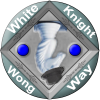Lithose, what if blade contact generates enormous friction or magnetic attraction so blocks work very well with lightsabers?
Also why are you comparing them to rapier when showing a video of saber fight, they are very different. Rapier more stab stab, saber more slash slash stab drag.
Saber in fencing doesn't mean a saber-saber; it means any part of the blade can make contact (So you can score a point with the edge AND point, where in foil only the point of the weapon can). The form (Saber style) still uses mostly stabs and thrusts. Mostly because when dealing, again, with light weapons--that kind of long reach and quick movement is just superior; even if you can slash, you won't because it is too clumsy and opens you up too much to an attack. If I make a cutting motion, I commit a lot more time to the swing than a simple thrust, or a wrist flip. I can also stay much lighter on my feet without said commitment. Why fencing evolved the way it did, even with the "saber" rules is due to this (And you can argue in a "real fight", scoring points wouldn't happen ect; but again, in a fight with a weapon that will vaporizes flesh on contact? I'd say the fights would be very much like scoring points, every hit would give you a huge advantage, even if it were only little taps here and there, as you take your opponent apart).
As for the blocking? Well again, the problem is for a light weapon? It's easy to move it before you make contact (Even if we can say once the swords are crossed they get 'stuck"--with a decent "light" weapon, you'd never hit a stationary object unless you wanted to, if you were at all decent.)...So if you go to put your weapon in my way, I can just move my wrist really easy and slip around it, without ever hitting it. Again though,
parriesare different; they require hitting the other persons sword--your sword is
alwaysin motion, because you don't want to give him the chance to correct the thrust. So, I mean if you're saying that the big blocks happen because someone parries and their swords get stuck together? Sure, that works as a reason on the screen.
But it still doesn't explain the "strength" based chopping/slashing motions and big grand standing saber holds. With such a light weapon, both those things are pretty silly; especially with a weapon that can cut with even less force than a real sword (Which requires about a pound of pressure). However; with a nice heavy weapon? Those big boisterous motions aren't so silly..in fact they end up looking really good, then (In my opinion). Because when fighting with big broad swords against armor, those big swings are what you might expect. Which is why all the references with the flipping and one handed saber use? Made the sabers look odd...they felt like they had weight on the old films, it made them feel better in their own universe. When I saw them being twirled around, half the fighting style started looking slow and clunky, just really obtuse to do those big chops when it's clear you can flip the saber around with your wrist...I mean why would you put your full frontal face so close to your target then? (Giving him a far bigger area to hit?)...It doesn't make sense. (But it DOES make sense if the saber has some heft and weight, then you need your fully body to control it.)













